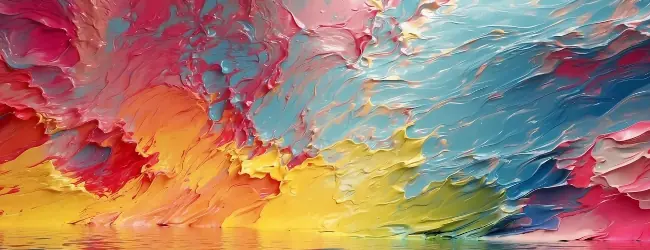First, notification. I created a new category (Category: Mental system of expressing oneself) for the mental system of expressing oneself. Please refer to it if you want to read about this topic.
Recently, I have explained the mental system of expression. It is one part of logical processing. That made me consider the mindset of professional artists who continue to create a specific kind of art product. Let’s talk about it.
How to keep enjoying creative, expressive activities
Sometimes, we want to enjoy creative, expressive activities, even after we satisfy our desire to express ourselves. Examples are writing stories, singing songs, painting pictures, and composing music.
Although realizing the images inside ourselves is exciting, we often lose our motivation. Since its purpose is to recognize our feelings logically, the desire to express fades once we become able to do it. In other words, losing motivation to express is natural.

However, some artists can continue creative, expressive activities. They can continue to create stories, music, and drawings. Why are they able to stay motivated?
One reason is that they are enjoying prediction-driven intellectual fun rather than the desire to express themselves. In other words, we can enjoy expressive activities even without the desire to express. Today, I will explain the mental logic.
Two kinds of logical enjoyment
Even if we lose motivation to express ourselves, we can still enjoy artistic activities by switching to logical prediction. Although continuing the same activity isn’t always rational, it will broaden our options.
There are two kinds of logical enjoyment. They are as follows, although I recently introduced them repeatedly:
- Expressing ourselves is the process of verbalizing feelings that are difficult to describe. Despite its excitement, its motivation will decline soon once we recognize it logically. Although it satisfies our spirituality, it seldom improves our material abundance.
- Prediction and feedback are the logical processes that create new things. We try to realize products that adapt to reality based on our current logic more efficiently. Although it is less exciting than expression, it is intellectual fun and satisfies our material abundance.
Art contains those two aspects. In other words, art is not always an expressive activity. That tells us that switching to the latter enables us to enjoy creating artworks.
An example of a potter
To make it easier to understand, let’s look at an example of a potter.
Pottery is an art. We often view it as an expressive activity. We think it reflects the creator’s spirituality.
However, from the perspective of a potter, it is often an intellectual activity centered on prediction and feedback.
For example, there are various variables in pottery, such as the clay components, the shape and thickness of the ceramics, the grade of the material, the kind of coating, the baking temperature, the baking time, and the cooling speed. Modifying one element affects other elements. Changing the clay ratio also changes the appropriate baking temperature.

In other words, creating excellent pottery with unique circumstances requires advanced logical ability due to its complexity. That is why high-quality pottery is historically valuable and expensive. It is a symbol of logical ability.
From the perspective of a potter, it is often intellectual exploration, not expression. Among various variables, we predict, receive feedback, and search for the optimal solution with our logical sense.
That creates high-quality products and provides people with more abundance.
Enjoying logical activities
The same goes for other artistic activities, such as writing stories, painting pictures, and sewing bags. They have many valuables.
For example, in story writing, we need to consider reasonable characters, worldviews, descriptive methods, and story development based on the theme. In the case of painting, we need to consider an integrated, appropriate solution, such as the canvas material, paint types, brush quality, composition, and drawing method for the current era and customers according to the subject.

Only logical people can identify reasonable solutions. In unique situations, mimicry doesn’t work. Since there are too many elements, it is rare for something to happen by chance. In other words, only logical ability allows us to take advantage of accidental discoveries.
In this approach, although many people consider our activities as artistic, they are not a pursuit of expression. Art is not just an expression of the inner self. It is merely the early stage of art. We can enjoy predicting and receiving feedback to create better work.
Our work is not only our artworks but also our lives. We can logically create an abundant and joyful life for both ourselves and others.
Conclusion
That is the prediction-driven intellectual enjoyment.
Even if we lose the motivation to express ourselves, we can still enjoy artistic activities by switching to logical prediction.
Although continuing the same activity isn’t always rational, it will broaden our options.
This logic might help you improve your life flexibly.
Thank you for reading this article. I hope to see you in the next one.


